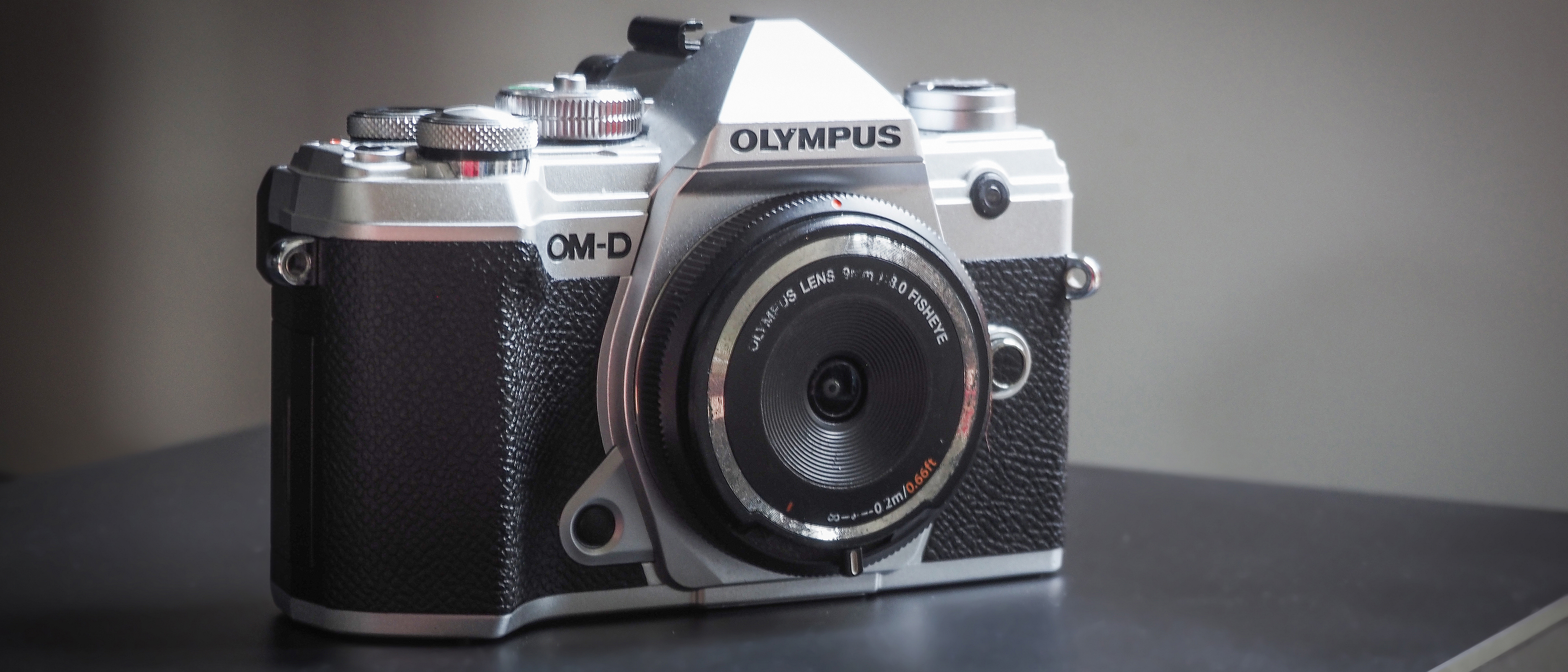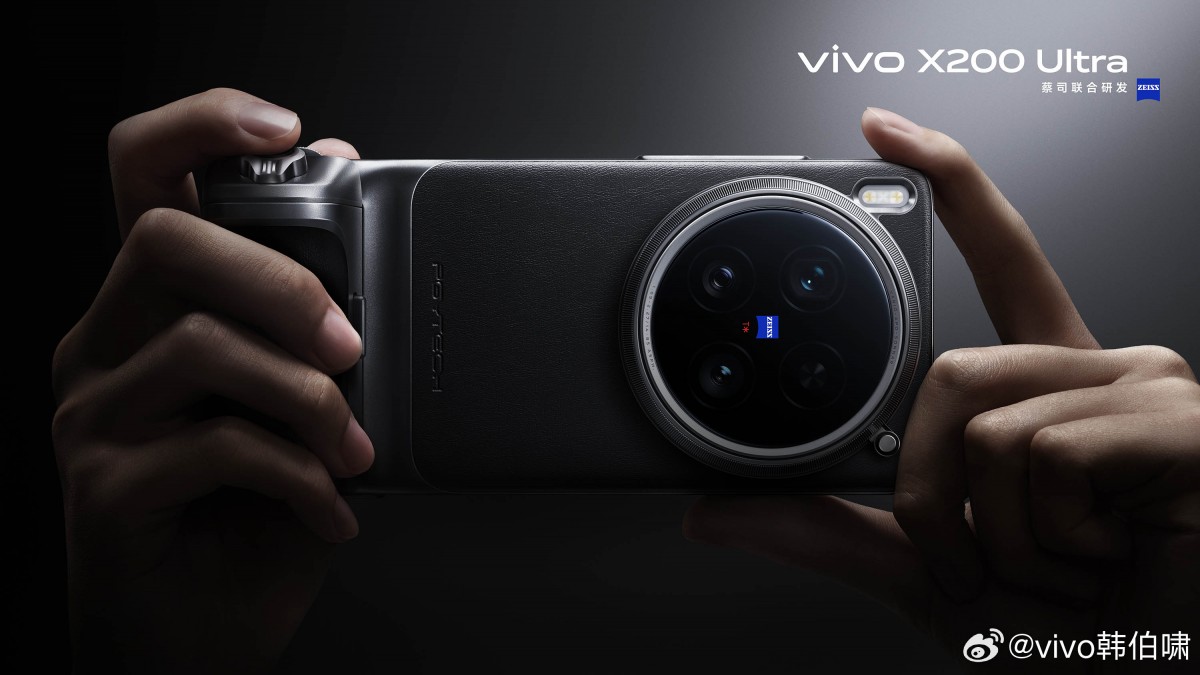Digital Camera World Verdict
Part body cap, part fisheye lens, it’s no substitute for an up-market lens like the Olympus 8mm f/1.8 PRO Fisheye, but is only a seventh of the price. Not even big enough to qualify as a ‘pancake lens’, it’s only half an inch long and adds a bit of fun to photography, with a genuinely different perspective.
Pros
- +
Cheap for a fisheye lens
- +
Super-skinny
- +
Weighs just 30g
Cons
- -
Expensive for a body cap ;)
- -
‘Only’ 140-degree viewing angle
- -
Aperture fixed at f/8
Why you can trust Digital Camera World
Proving that lenses don’t always have to be expensive to buy, the Olympus Fisheye Body Cap 9mm f/8 only costs around £89/$99. It’s super-simple and fun to use, and certainly won’t weigh you down. It delivers that extravagant fisheye distortion for funky looking images and, at just half an inch thick works as a viable body cap into the bargain.
Specifications
Mount: Micro Four Thirds
Full frame: No
Autofocus: No
Stabilization: No
Lens construction: 5 elements in 4 groups
Angle of view: 140 degrees
Diaphragm blades: None
Minimum aperture: f/8
Minimum focusing distance: 0.2m
Maximum magnification ratio: 0.05x
Filter size: None
Dimensions: 56x13mm
Weight: 30g
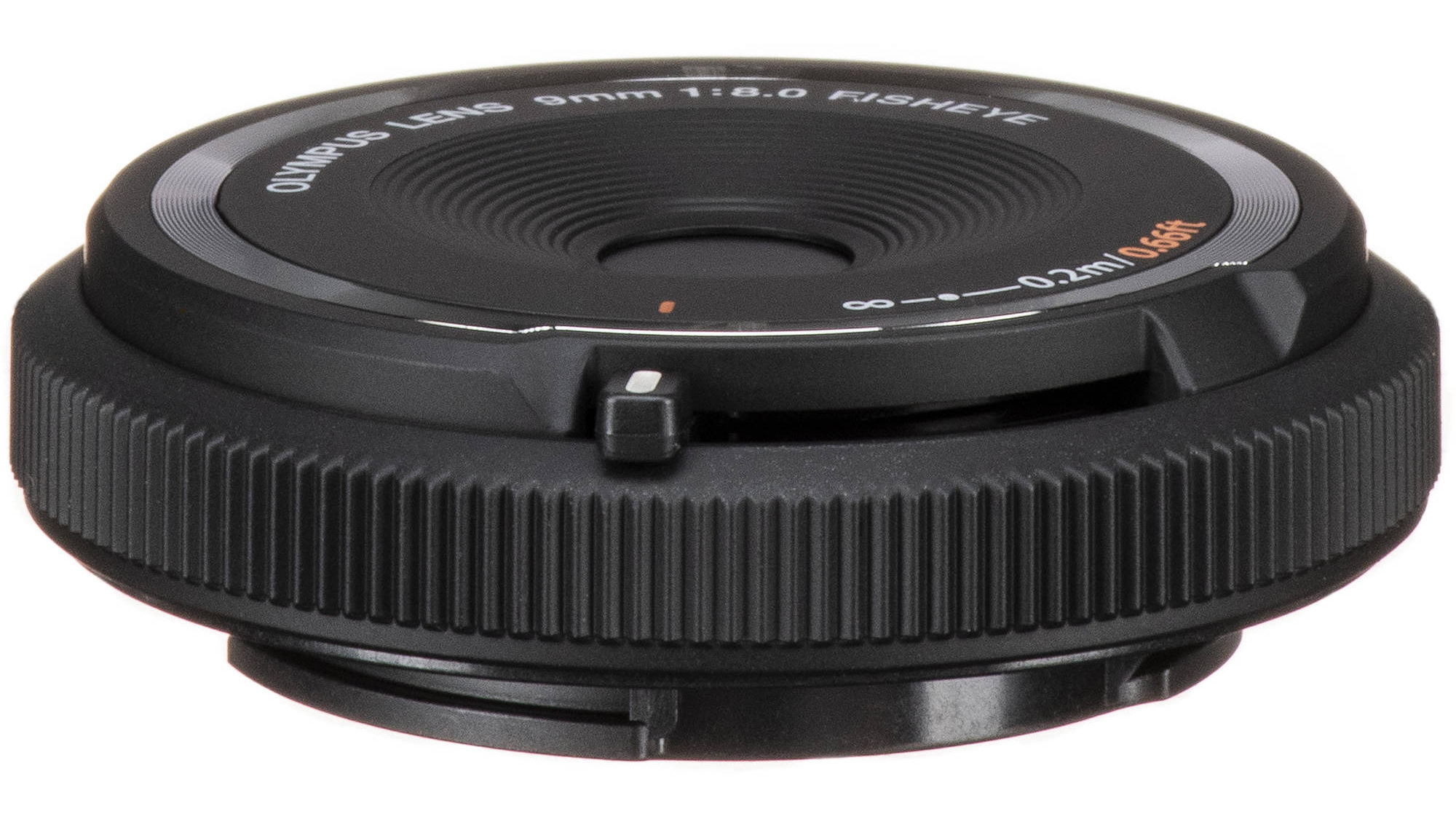
Key features
It’s surprising how much Olympus has managed to shoehorn into this half-inch lens. There are five optical elements arranged in four groups, including two aspherical elements which, in fairness, contribute to the downsized design.
As a diagonal rather than circular fisheye lens, it produces an image circle that’s large enough to cover the entire image sensor of a Micro Four Thirds camera, so you get full-sized rectangular images but with that trademark fisheye distortion.
There’s no adjustable aperture diaphragm, so you’re limited to shooting at a fixed aperture of f/8. There’s also neither autofocus nor a manual focus control ring. Instead, the lens features a rudimentary focus lever, which works pretty well. It enables you to select a deep focus setting for general shooting or a close-up position for subjects at a distance of around eight inches. The lever also allows you to engage the internal lens cap
Performance
The viewing angle of 140-degrees is a little lacking compared with the 180-degrees of most diagonal fisheye lenses, and the fisheye effect itself looks less extreme. Sharpness is pretty reasonable but drops off quite a bit towards the corners, where color fringing can be very noticeable.
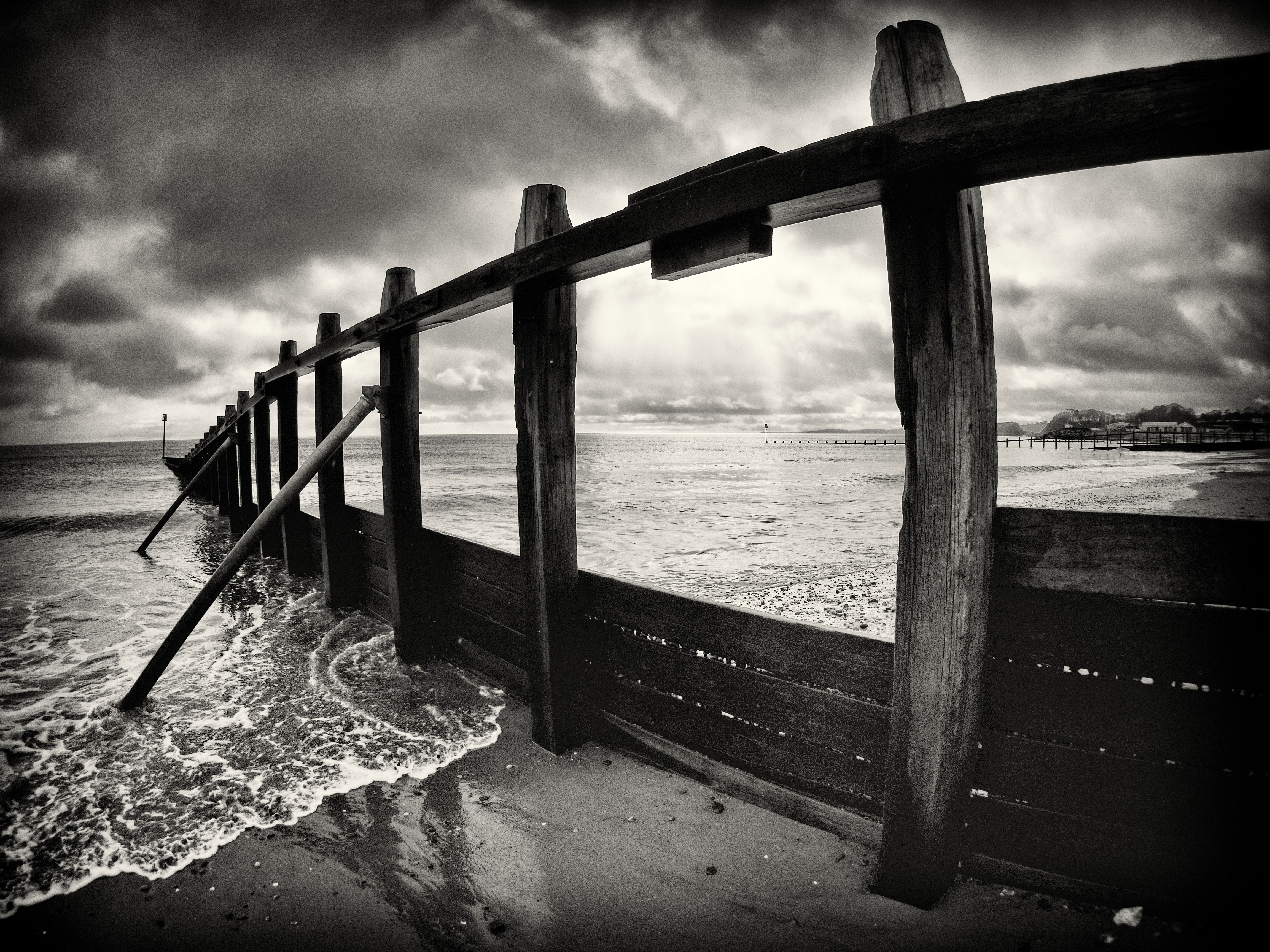
Lab results
We run a range of lab tests under controlled conditions, using the Imatest Master testing suite. Photos of test charts are taken across the range of apertures and zooms (where available), then analyzed for sharpness, distortion and chromatic aberrations.
We use Imatest SFR (spatial frequency response) charts and analysis software to plot lens resolution at the center of the image frame, corners and mid-point distances, across the range of aperture settings and, with zoom lenses, at four different focal lengths. The tests also measure distortion and color fringing (chromatic aberration).
Sharpness:
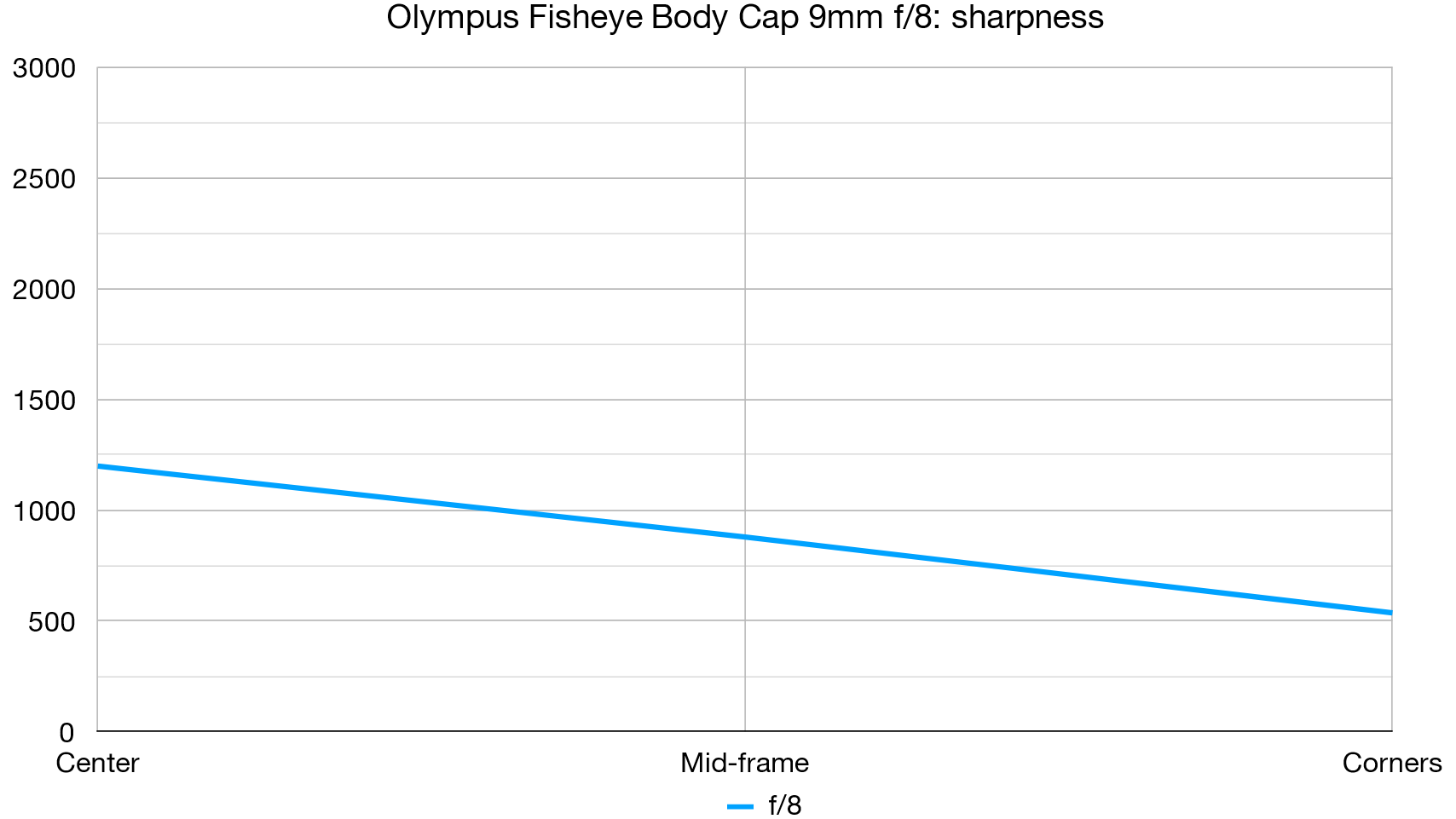
It’s not bad in the central region of the frame but a bit poor towards the edges and corners.
Fringing:
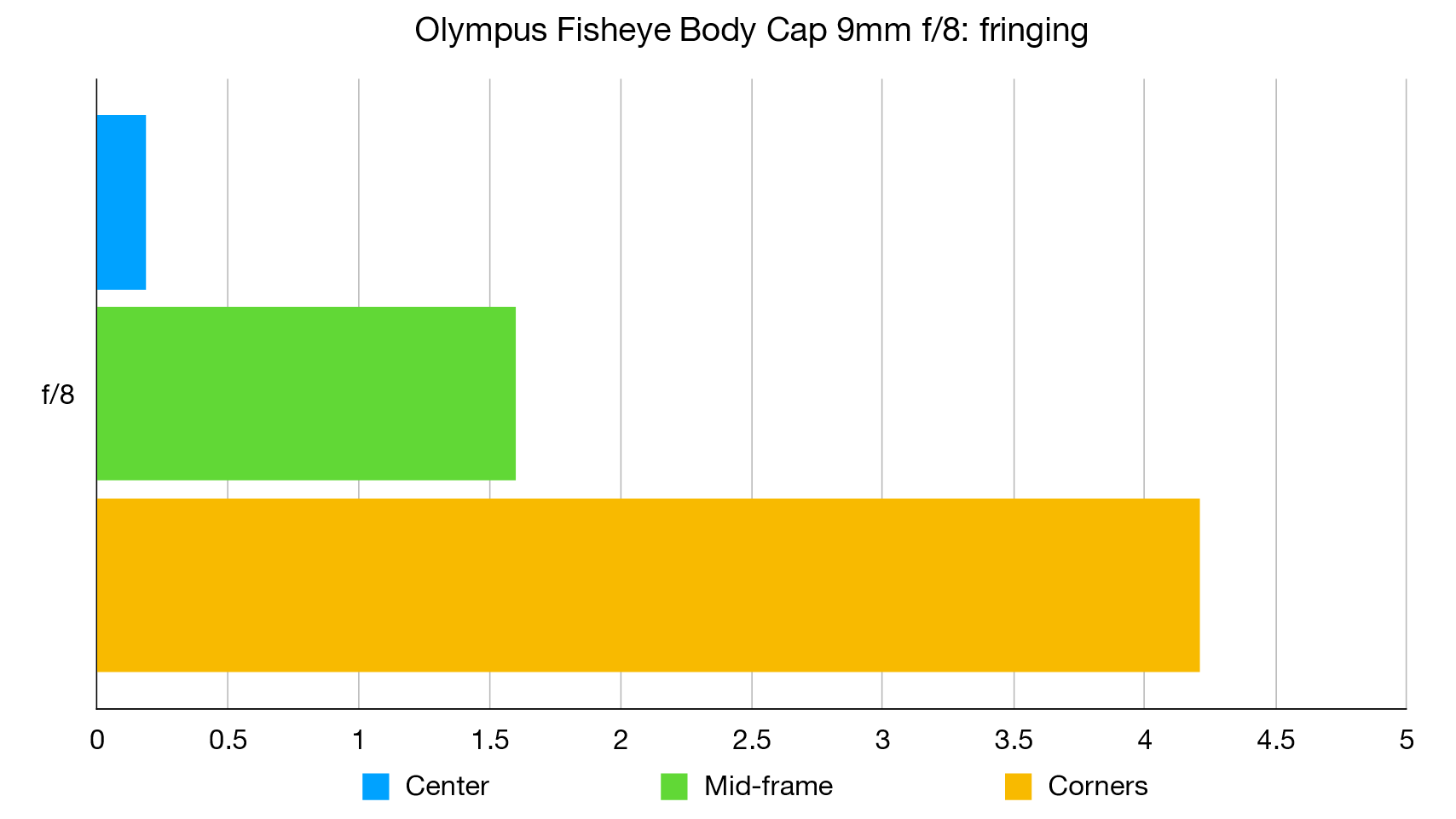
Color fringing around high-contrast edges can be very noticeable towards the corners.
Distortion: -22.2
It's a fisheye lens, so huge barrel distortion is the order of the day. Even so, it’s still quite restrained for a fisheye lens.
Verdict
Part body cap, part fisheye lens, it’s no substitute for an up-market lens like the Olympus 8mm f/1.8 PRO Fisheye, but is only a seventh of the price. Not even big enough to qualify as a ‘pancake lens’, it’s only half an inch long and adds a bit of fun to photography, with a genuinely different perspective.
Read more:
• Best camera lenses to get
• Best Canon lenses
• Best Nikon lenses
• Best Sony lenses
Matthew Richards is a photographer and journalist who has spent years using and reviewing all manner of photo gear. He is Digital Camera World's principal lens reviewer – and has tested more primes and zooms than most people have had hot dinners!
His expertise with equipment doesn’t end there, though. He is also an encyclopedia when it comes to all manner of cameras, camera holsters and bags, flashguns, tripods and heads, printers, papers and inks, and just about anything imaging-related.
In an earlier life he was a broadcast engineer at the BBC, as well as a former editor of PC Guide.
